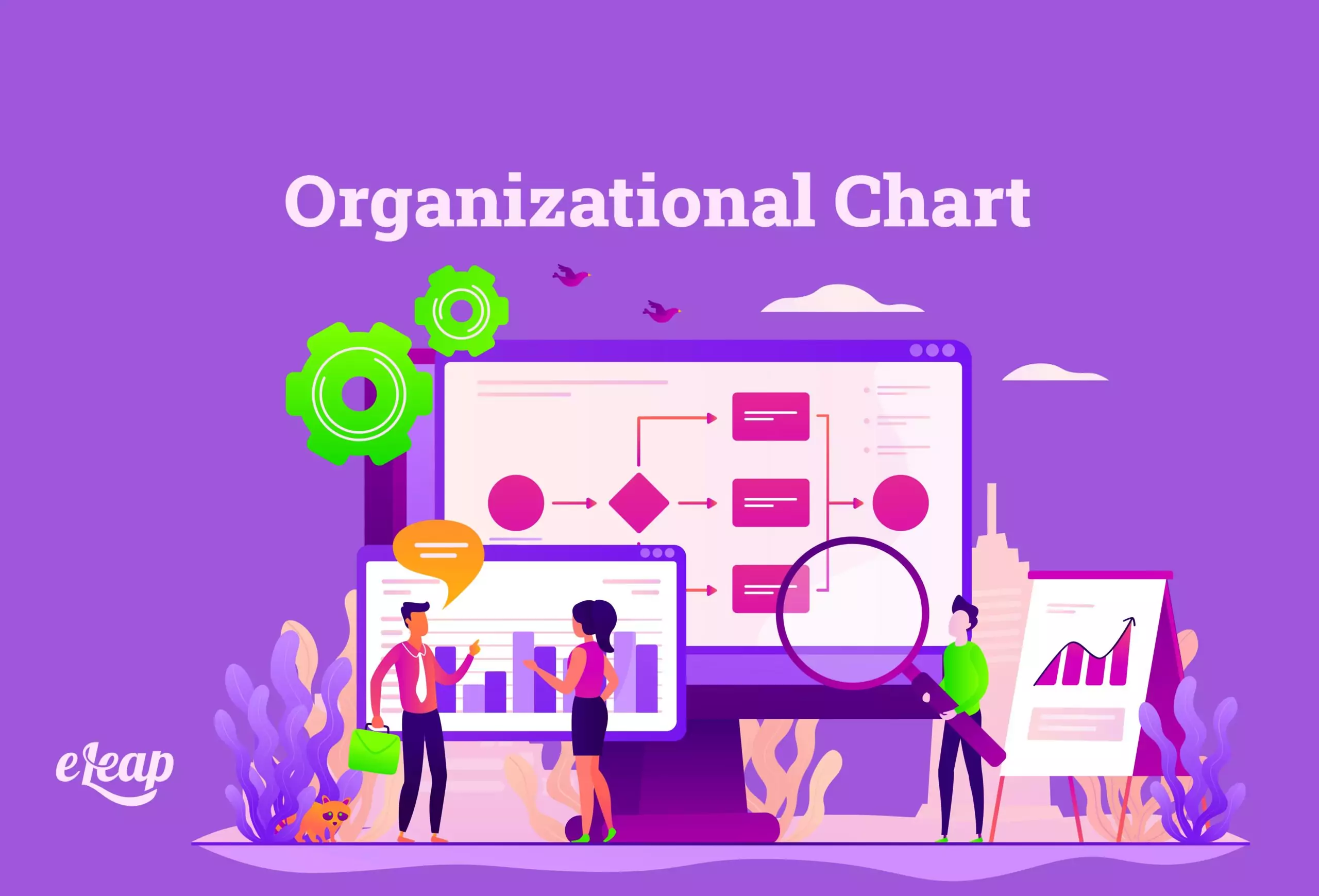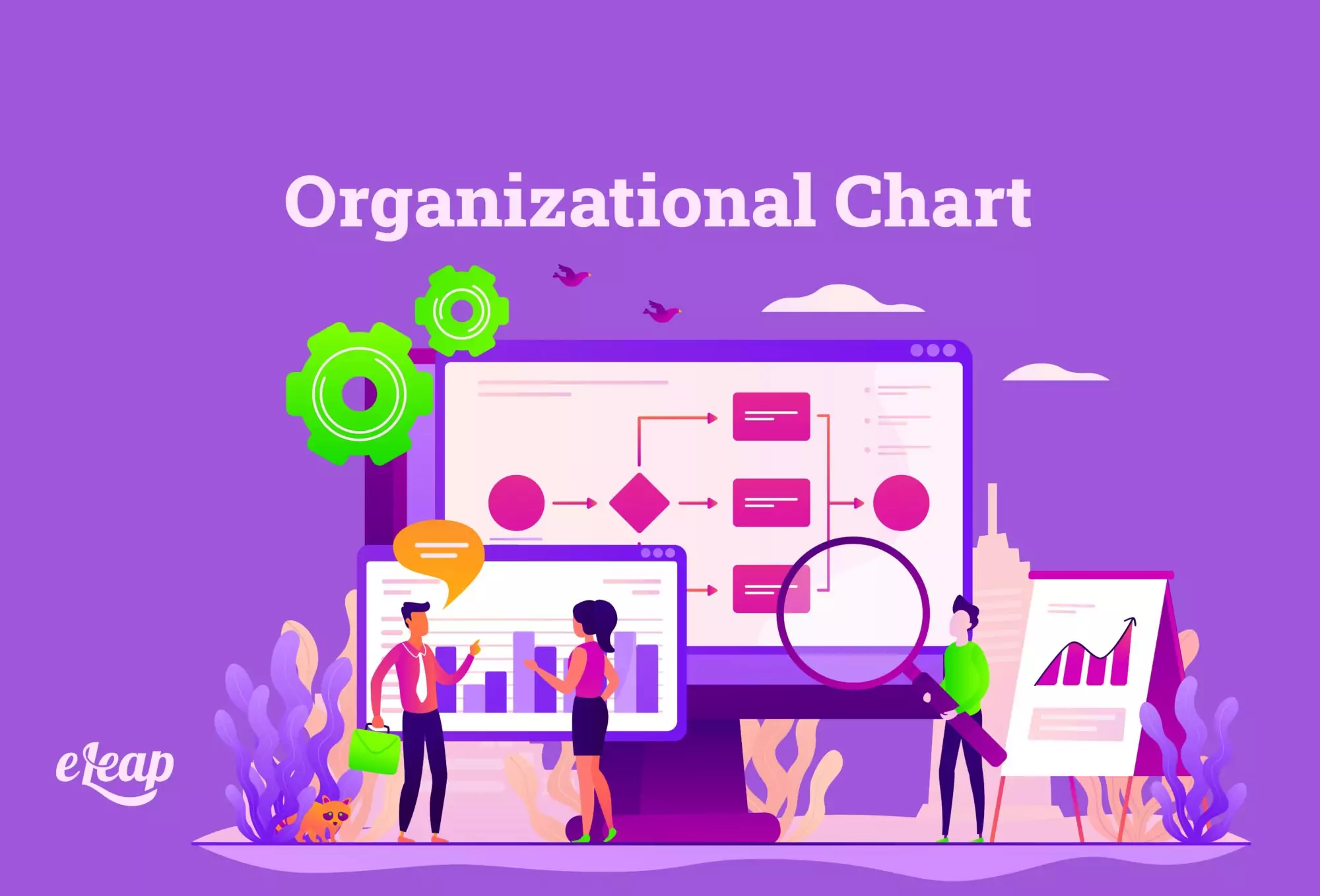Organizational Chart
Flat or vertical organization chart? Which is your preference?

A business should always be striving for improvement. As a business owner or manager, you want innovations, new products, increased efficacy, and higher customer satisfaction. All these things lead your business to higher profits and allow your business to grow.

As your businesses size increases, it can be difficult to keep up the same quality level and customer service that your smaller organization had. This is especially true if you don’t have any documented systems in place for understanding how your business processes work. An organizational chart can help you get your business organized.
This article will explore the importance of an organizational chart, answer common questions about the organizational chart, and explain how you can implement one into your business.
What Is an Organizational Chart?
An organizational chart is a diagram that depicts the hierarchy of employees and leadership positions in your business. This diagram helps you understand how your business is organized. It makes a solid structure of responsibilities that employees can refer to when and if they need to contact management later on. It should be easy for anyone to look at the chart and understand your business’s leadership framework. An organizational chart also confirms that every job has someone responsible for it, and this ensures that each task is done.
Organizational charts can be used for a variety of purposes, though. They can be used as a management tool, as a directory of employees, and they can help with planning future projects. If your business is more team-based, an organizational chart can ensure each team understands how they relate to one another. This gives employees and management a sense of the bigger picture, which often improves worker efficiency and makes them feel valued.
There are many more ways an organizational chart can improve your business, and fit any team need. Let’s explore those benefits.
Benefits of Organizational Charts to Operations
Organizing your business can provide you many tangible benefits, and help improve your business’s operations.
- Responsibility. When everyone understands who is responsible for what, you can be sure the job gets done. A chart can also clarify the chain of command in your business.
- Understanding. Employees will be better equipped to take on tasks. They will also understand the company mission better and understand how they fit into the business’s vision.
- Communication. A clear understanding of management in an easily reference-able chart will help direct communications more effectively. The management’s direction will also be clearer, ensuring there will be less confusion between employees and management.
- Resources. An organizational chart is also just an excellent way to display everyone’s communication information. Not only that, an organization chart can describe data hierarchies, structure several business entities, and help answer frequently asked employee questions.
With all these benefits in mind, you need to make sure that you choose an organization chart format that best fits your business. This will confirm that you’re getting the most value out of this resource.
What Should an Organizational Chart Include?
To make sure your organizational chart is as effective as possible it’s best to find a structure that best represents your business. A format that poorly reflects your business management structure will create more confusion instead of simplifying your hierarchy.
An organizational chart should also be comprehensive. Be sure that you include the information of everyone that needs to be on the chart. Reach out to your employees and managers to make sure that all their data is still up-to-date. Data updating should be done occasionally to ensure this resource is effectively maintained. If phone numbers change or if new hires need to be added, the chart should be updated. Whether your company is responsible to a president, CEO, or a group of shareholders, the chart should reflect and communicate this clearly.
The importance here is to make sure that your organizational chart is a true mirror of your business. There is no one acceptable way of making an organizational chart, and you may need to customize a typical format to make sure it will be of effective use in your business.
There are four basic types of organizational charts that most businesses fall into. Let’s explore them further.
Types of Organizational Charts
There are four types of organizational charts. These charts are called the flat chart, the matrix chart, the divisional chart, and the hierarchical chart.
Flat Charts. This chart is also called the horizontal chart. As the name suggests, the chart is a completely flat chart. It is organized by sectors instead of positions of management. This reflects a company where the employees have a lot of autonomy and are required to be responsible for independent decision-making.
Matrix Charts. Matrix charts are the best fit for describing complex employee organizations. There may be some businesses where certain employees have a skill but work in several departments under several managers. This chart allows you to group these employees into separate skill-sets, for example, graphic design, while also connecting them to the other departments they work with.
Divisional Chart. The divisional chart is a bit different from the others. A divisional chart is concerned with highlighting not just hierarchy but also product or geographical distinctions. These businesses often have multiple of the same departments, which can increase operating costs but may be necessary for distinct projects.
Hierarchical Chart. These are the classic triangle-shaped organization charts. This is a straightforward way of demonstrating the chain of command, and most everyone is familiar with this kind of business structure. At the top of the chart should be the leader or shareholders, and the rest of the chart should include all applicable employees.
Who Uses these Organizational Charts?
The most common kinds of charts used are hierarchical and flat charts. Hierarchical charts are most common because most big and medium-sized businesses have a direct line of communication from a head leader, to management, to employee. Flat charts are most often used for small businesses. That is where there is often much employee autonomy. The lines between employee and management are thin, and employees take on both management roles and selling roles.
Divisional and matrix charts are less common but still effective chart formats. Matrix formats are best used for businesses that have employees grouped by skill-set, as they may work in many departments. An organizational chart should still show an individual or department they are responsible to. Divisional charts work best for companies that have departments based on specific products or that are separated by geography. This may be best for companies that have teams dedicated to one of many products or that are in different cities.
Always remember that these charts are not exhaustive. These are just the most common ways businesses are organized. Your business may not exactly fit any one of these categories. When you sit down to make your own organizational chart, don’t be afraid to think innovatively and combine or reject elements of chart templates that you don’t like.
Making an Organizational Chart
There are a lot of online resources that offer templates or give you the ability to make your own chart from scratch. These resources are great, and many are very easy to use. You can have a template made in a flash, and that removes the work of figuring out how to design or program your own chart. After finding a chart, the only work left you have left to complete is data entry.
Many of these programs also allow you to input pictures for each manager and will include a card that will contain all the information for that individual. These are often the easiest method of making an organizational chart for your business and offer services that allow for easy editing later on.
Making your own organizational chart from scratch can range in difficultly depending on your needs and expectations. You may need to hire a graphic designer if you don’t have the skills to design it yourself, but there are other ways you can make your own chart that are a bit easier than hiring a separate expert. Many word processing programs have organizational chart inserts that you can use as a template instead of finding one online. Or you can use an existing spreadsheet of employee information and export that into a basic hierarchal chart, which you can learn how to do here. Exploring your current programs may reveal helpful tools that you didn’t know existed before and save you money.
Making an Organizational Chart Work for You
Organizational charts can offer you and your company many benefits. When you understand how to make and implement an organizational chart into your business, you are giving your employees and management an excellent resource. Organizational charts can help you understand how employees are responsible for work, and clarify the chain of command. When you understand your business and how it is organized, your workplace can become more effective at producing your product or delivering your service, no matter what your industry is.